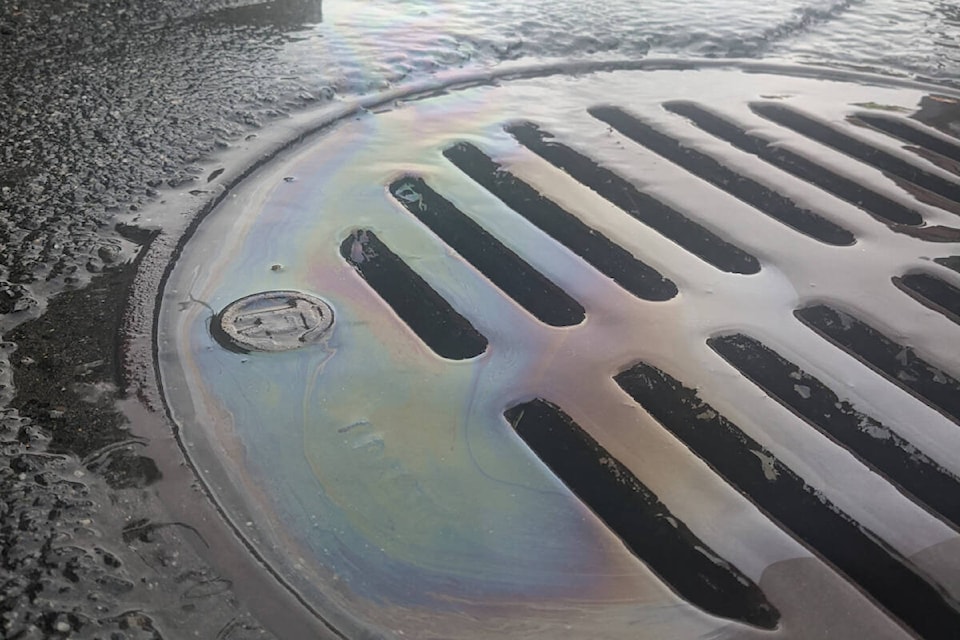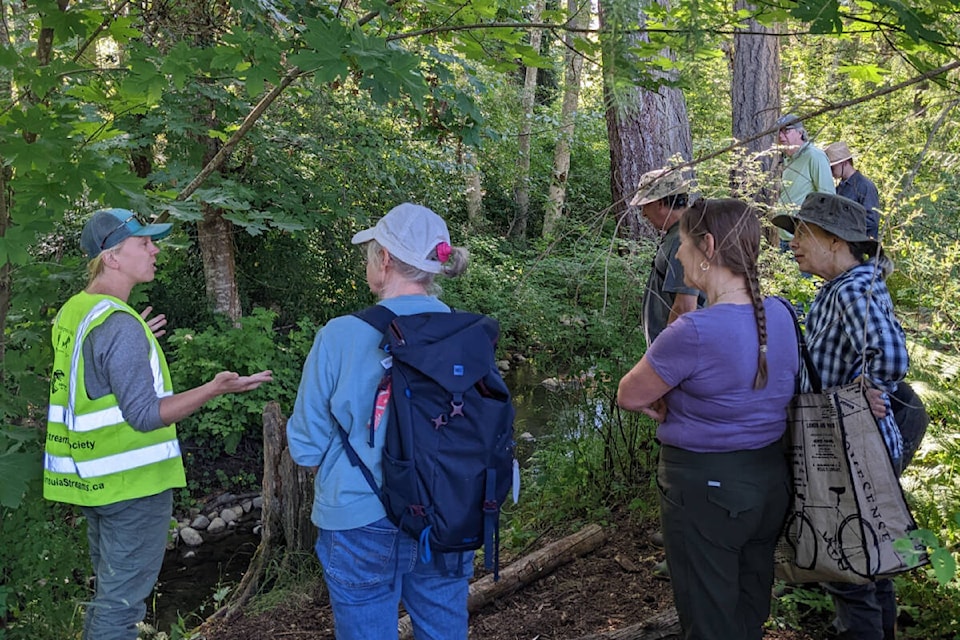Waterway stewards hope the discovery of lethal levels of tire toxins in a salmon-bearing stream in Saanich will spur residents to get involved in both bio filtration and policy-making.
As part of routine testing, volunteers with Peninsula Streams Society found 6PPD-quinone (6PPD-Q) in Gabo Creek, a salmon-bearing tributary of the Colquitz River Watershed.
Peninsula Streams is involved in a deeper look at the impacts of 6PPD-Q on waterways across the Island with the B.C. Conservation Foundation in partnership with Vancouver Island University (VIU). The chemical compound is widely used as a stabilizing additive in rubbers such as tires. It sheds from tires and makes its way into streams through road runoff and storm drains.
Known to be toxic to specifically coho salmon, sampling by the Peninsula Streams water quality monitoring volunteers recently revealed concentrations lethal to the hundreds of juvenile coho that rear in Gabo Creek.
READ ALSO: Greater Victoria water stewards tackle tire toxins in Bowker Creek
The non-profit stewardship society hopes flagging the concerning levels will spur the community to get involved in solutions, says the Peninsula Streams Society executive director Kyle Armstrong.
“If we can, as a community and as a resident, understand the issue and attack it from a decentralized nature we might have a better chance of scaling up the solution more quickly,” Armstrong said.
Rain gardens are particularly useful in battling 6PPD-Q which doesn’t appear to accumulate, and breaks down quickly.

“Biofiltration – running stormwaters through a rain garden or some sort of plant medium – does an amazing job of remediating it,” he said. “Green Stormwater Infrastructure such as rain gardens offers an effective filtration solution, collectively we need to scale up and prioritize their adoption.”
Peninsula Streams Society is involved in restoration and protection of aquatic ecosystems across Greater Victoria including through its Rain Gardens for Headwaters program, creating intercepting rain gardens adjacent to storm drains or urban areas to intercept and filter stormwater into waterways.
READ ALSO: VIDEO: Students dig Greater Victoria group one bed closer to 1,000 gardens
“It’s a simple solution but it’s kind of gotta go in everywhere,” Armstrong said, noting the magnitude of water that might require filtration.
Armstrong hopes people will jump into local stewardship – with testing, building rain gardens, informing stormwater management policy or simply paying attention to the local storm drain.
The VIU Applied Environmental Research Lab engages several community to monitor for 6PPD-Q in Vancouver Island watersheds. Funded by the BC Salmon Restoration and Innovation Fund the project aims to identify major sources of 6PPD-Q, better understand how concentrations change over time and space, and inform mitigation strategies to protect salmon. Sites across Vancouver Island will continue to be monitored to identify which streams are most vulnerable to 6PPD-Q.
Follow the project at tireweartoxins.com.
